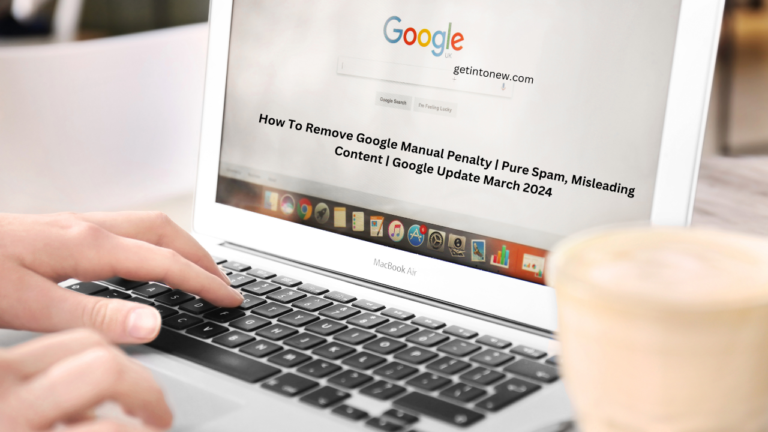Introduction:
In the ever-evolving landscape of the online world, website owners often find themselves entangled in the complexities of SEO strategies and content optimization. While seeking a bit of publicity or striving for validation through clicks and likes, some individuals resort to tactics that may land them in trouble with search engines. Google, being at the forefront of online search, periodically rolls out updates to refine its algorithms and penalize websites engaging in spammy or misleading practices. The March 2024 update has seen a surge in manual penalties, especially for websites indulging in pure spam and misleading content.
Understanding the Types of Penalties:
- Pure Spam Penalty:
The pure spam penalty is issued to websites that employ automated techniques to generate content. This includes instances where content is scraped from various sources, spun, or even translated using automated tools, resulting in poor grammar and spelling mistakes. Websites hosting wallpapers or generic good morning messages without any substantial content are also susceptible to pure spam penalties. - Misleading Content Penalty:
On the other hand, the misleading content penalty is imposed on websites that may have human-generated content but are involved in deceptive practices. This could include copying content from other websites, making slight modifications, and presenting it as original. Such websites often manipulate meta tags, titles, and descriptions to mislead search engines and users.
The Impact of Google’s March 2024 Update:
The recent Google update in March 2024 has brought three significant changes – Core Update, Helpful Content Update, and Spam Update. The Spam Update, in particular, targets websites that rely heavily on AI-generated content. The core update is distinct, focusing on activities that are not related to the core algorithm but can affect a website’s visibility. Understanding these updates is crucial for website owners to navigate the changes effectively.
Identifying Affected Websites:
Website owners who find themselves affected by manual penalties need to understand whether they are dealing with a manual or algorithmic penalty. In most cases, websites are penalized for either pure spam or misleading content, and sometimes a combination of both.
- Pure Spam:
Websites affected by pure spam penalties often showcase content that is automatically generated or poorly modified. Common signs include grammatical errors, spelling mistakes, and the use of automated tools for content creation. - Misleading Content:
Websites receiving penalties for misleading content usually have human-generated content but engage in deceptive practices. This may involve copying and pasting content from other sources, making minor adjustments, and presenting it as original work.
The Removal Process:
Removing a manual penalty from Google requires a systematic approach. Whether it’s pure spam or misleading content penalty, the following steps can help website owners rectify their situation:
- Content Cleanup:
For pure spam penalties, a thorough cleanup of content is necessary. Remove any automated or low-quality content and focus on providing valuable, original material. Fix grammatical errors and improve the overall quality of the website’s content. - Reevaluate SEO Practices:
Websites penalized for misleading content should reevaluate their SEO practices. Ensure that meta tags, titles, and descriptions accurately represent the content. Avoid deceptive practices and prioritize transparency in presenting information. - Quality Over Quantity:
Focus on creating high-quality content rather than relying on quantity. Google’s algorithms prioritize websites that offer valuable, relevant content to users. Invest time in research, proper citations, and presenting information in a clear and engaging manner. - Link Audit:
Conduct a thorough audit of your website’s backlinks. Remove any low-quality or spammy backlinks that might be contributing to the penalty. Aim for natural and authoritative links that enhance your website’s credibility. - Submit a Reconsideration Request:
After implementing the necessary changes, submit a reconsideration request through Google Search Console. Clearly outline the steps taken to rectify the issues and provide evidence of the improvements made to your website.
Conclusion:
Navigating Google penalties, especially manual penalties related to pure spam and misleading content requires diligence and a commitment to ethical SEO practices. The March 2024 update emphasizes the importance of high-quality, original content and transparent SEO strategies. Website owners should see these penalties not just as setbacks but as opportunities to improve and create a more valuable online experience for users. By following the outlined steps, website owners can effectively remove Google manual penalties and regain their visibility in search results.

